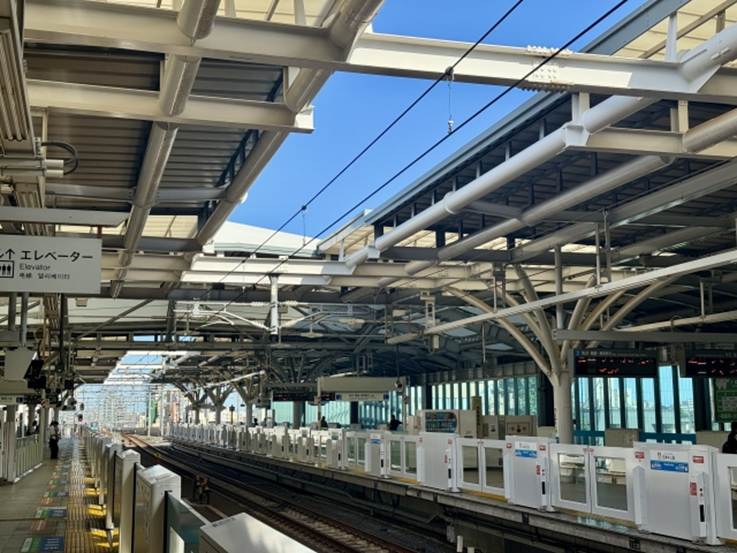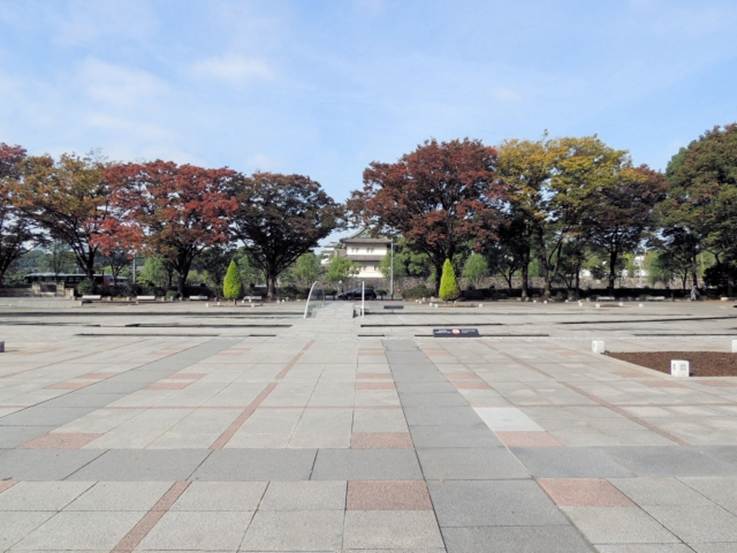Nestled in the heart of Tokyo, the Imperial Palace is more than just the residence of Japan’s Emperor—it’s a living symbol of the nation’s history, culture, and resilience. Built on the site of the historic Edo Castle, the palace seamlessly blends centuries-old architecture, serene gardens, and scenic moats with the bustling energy of modern Tokyo. Whether you’re a history buff, a photography enthusiast, or simply looking for a peaceful escape in the city, a visit to the Tokyo Imperial Palace offers a unique glimpse into Japan’s royal heritage and timeless beauty. In this guide, we’ll cover what to see, the best times to visit, and everything you need to know for a memorable experience.
A Brief History of the Tokyo Imperial Palace

The Tokyo Imperial Palace stands on the former site of Edo Castle, the seat of the powerful Tokugawa shoguns during Japan’s Edo period (1603–1868). After the Meiji Restoration, the castle became the Imperial residence, marking Tokyo as the new capital of modern Japan. Much of the original structure was destroyed during World War II, but remnants like gates, moats, and stone walls remain, giving visitors a tangible connection to centuries of history. Today, the palace is a blend of historical architecture, lush gardens, and modern facilities, symbolizing Japan’s ability to honor tradition while embracing the present.
What to See at the Tokyo Imperial Palace

Imperial Palace East Gardens (Kōkyo Higashi Gyoen)
Open to the public year-round, the East Gardens are a highlight for visitors. Here you’ll find remnants of Edo Castle, stone walls, and beautifully manicured gardens. Seasonal blooms, especially cherry blossoms in spring and colorful foliage in autumn, make it a photographer’s dream.
Nijubashi Bridge

Arguably the most iconic view of the palace, the Nijubashi Bridge spans the palace moat and is a favorite spot for photos. Its elegant arches reflect perfectly on calm days, creating a picture-perfect memory of Tokyo.
Kikyō-mon Gate and Fushimi-yagura Keep

The Kikyō-mon Gate, one of the original Edo Castle gates, and the nearby Fushimi-yagura Watchtower offer a glimpse into Japan’s feudal past. These historical structures evoke the grandeur of samurai-era Tokyo.
Outer Gardens (Kokyogaien)
The expansive Outer Gardens are ideal for a stroll or picnic, with scenic views of the palace walls, moat, and surrounding skyscrapers—a serene oasis amidst the city.
Imperial Household Agency Tours for Special Access

For those seeking deeper access, guided tours of the Imperial Palace grounds are available via reservation. These tours provide insight into the palace’s architecture, history, and the daily life of Japan’s Imperial Family.
When to Visit

Best seasons:
Spring (March-April)
Spring is one of the most magical times to visit the Tokyo Imperial Palace. The cherry blossoms in the East Gardens and along Chidorigafuchi Moat create breathtaking scenery that attracts both locals and tourists. The delicate pink petals contrast beautifully with the historic stone walls and serene waters of the palace moat, making it a photographer’s paradise. Visiting in the morning or late afternoon allows you to enjoy the soft light and avoid the heaviest crowds.
Autumn (October-November)
Autumn is another spectacular season for the palace. The vibrant foliage of ginkgo, maple, and cherry trees transforms the gardens into a mosaic of gold, red, and orange. The mild temperatures and crisp air make walking around the extensive palace grounds particularly comfortable. Autumn is also ideal for combining your visit with nearby attractions like Hibiya Park and Chidorigafuchi, where the fall colors continue along the moat paths.
Other Seasonal Highlights
Summer (June–August): The palace gardens are lush and green, though Tokyo’s heat and humidity can be intense. Early morning visits are best.
Winter (December–February): Crisp winter air and fewer crowds make it ideal for peaceful walks and photography, though some areas may be less colorful.
Read more on the seasons of Japan: Seasonal Wonders: Best Activities in Tokyo.
Special Events:
New Year’s Greeting (January 2)
One of the rare opportunities to see the Imperial Family in person occurs during the New Year’s Greeting. On this day, the Emperor and his family appear on the palace balcony to greet the public. Crowds gather along the palace walls, and it’s an unforgettable cultural experience for visitors. While tickets are not required, arriving early is recommended due to the popularity of this event.
Emperor’s Birthday (February 23)
The Emperor’s Birthday is another special occasion when the inner palace grounds are open to the public. Visitors have a rare chance to enter areas that are normally restricted, explore more of the palace gardens, and observe traditional ceremonies. This event offers a unique glimpse into Japan’s royal traditions, making it a must-see for travelers interested in history and culture.
Opening Hours and Closure Days
- East Gardens: Typically open 9:00 AM–5:00 PM (varies seasonally)
- Closed on Mondays, Fridays, and special holidays. Always check the official Imperial Household Agency site for updated hours.
How to Visit

Access
- Tokyo Station: 10–15 min walk
- Otemachi Station: 5–10 min walk
- Nijubashi-Mae Station: direct access to the East Gardens
Admission
- East Gardens and Outer Grounds: Free entry
- Guided tours of the inner palace: Reservation required via the Imperial Household Agency
Tips for Visitors
- Bring photo ID for guided tours.
- Wear comfortable shoes for walking paths and garden trails.
- Respect photography restrictions and quiet areas inside the palace.
- Combine a visit with a nearby cultural experience (tea ceremony, traditional lunch).
Read on: 5 of Tokyo’s Finest Tea Houses for a Relaxing Sip of Serenity
Nearby Attractions and Activities
Marunouchi District

Just a short walk from the Imperial Palace, the Marunouchi district is Tokyo’s historic business hub, where old-world charm meets modern elegance. The area is famous for its beautifully restored red-brick buildings and upscale architecture. Visitors can explore luxury boutiques, high-end cafes, and elegant restaurants, perfect for a leisurely lunch or coffee break after touring the palace. Don’t miss Marunouchi Naka-dori Street, a picturesque tree-lined avenue that’s especially stunning during seasonal illuminations in winter.
Hibiya Park

A peaceful retreat in the midst of bustling Tokyo, Hibiya Park is ideal for a quiet stroll or a picnic. The park features ponds, fountains, and flower gardens, making it a favorite spot for locals and visitors alike. Seasonal events, such as rose and cherry blossom festivals, provide extra charm. It’s also a great place to observe traditional Japanese landscaping and enjoy a break before heading to nearby attractions.
Tokyo Station Area

The historic Tokyo Station, with its iconic red-brick façade, is an attraction in itself. Inside, visitors can explore a variety of shops, restaurants, and the underground Tokyo Character Street, which is perfect for anime and character merchandise fans. Nearby, the KITTE shopping complex offers a mix of local and international brands, plus a rooftop garden with views of the Imperial Palace grounds. This makes the area ideal for combining sightseeing, shopping, and dining.
Chidorigafuchi Moat

For nature lovers and photography enthusiasts, the Chidorigafuchi Moat is a must-visit, especially in spring. Lined with hundreds of cherry trees, the moat becomes a spectacular pink canopy during the Sakura season. You can rent rowboats for a unique perspective of the blossoms from the water, or simply stroll along the Chidorigafuchi Greenway for stunning views of the palace moat and surrounding greenery. In autumn, the colorful leaves create a serene and romantic atmosphere.
Read more: Guide to Japan’s Seasons and What You Need to Know Before You Go.
Travel Tips for the Best Experience

- Visit early morning for fewer crowds and soft lighting.
- Combine the palace visit with a cultural experience like a tea ceremony or traditional Japanese lunch.
- Accessibility: East Gardens have wheelchair-friendly paths and rest areas.
- Respect palace etiquette: avoid loud noises and restricted areas.

The Tokyo Imperial Palace is a rare blend of history, culture, and natural beauty in the heart of Japan’s capital. From the remnants of Edo Castle to the serene gardens and iconic bridges, it offers an unforgettable glimpse into the nation’s royal heritage. A visit here is not just a walk through a historic site—it’s an experience that connects you with centuries of Japanese tradition, all within the modern rhythm of Tokyo. Read more: Tour Japan Like a Native: Enjoy a walking tour through the streets of Tokyo and The Best Japan Tour for 2026: Hidden Gems, Local Guides & Authentic Experiences
